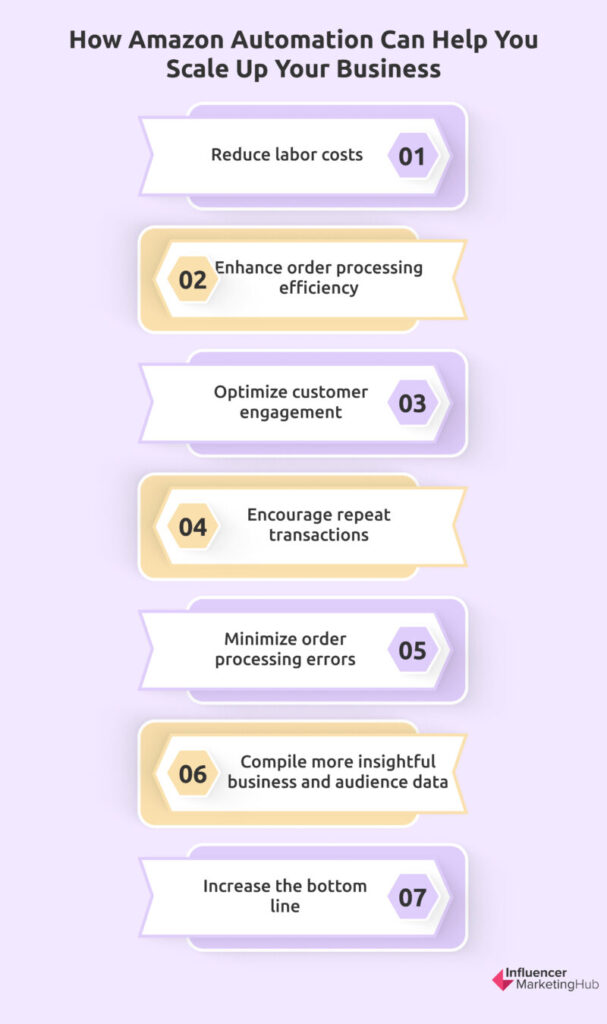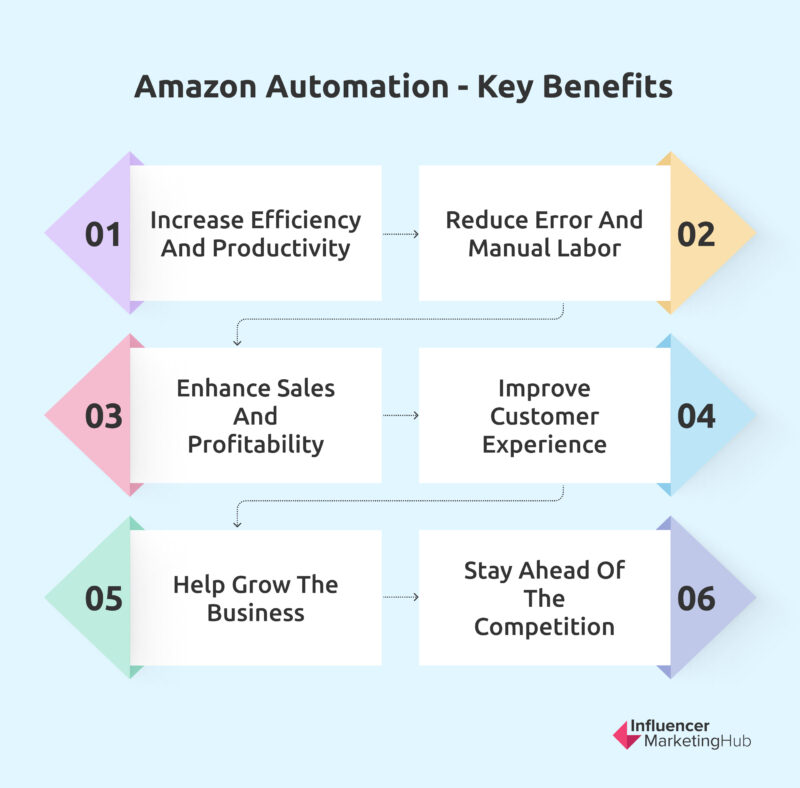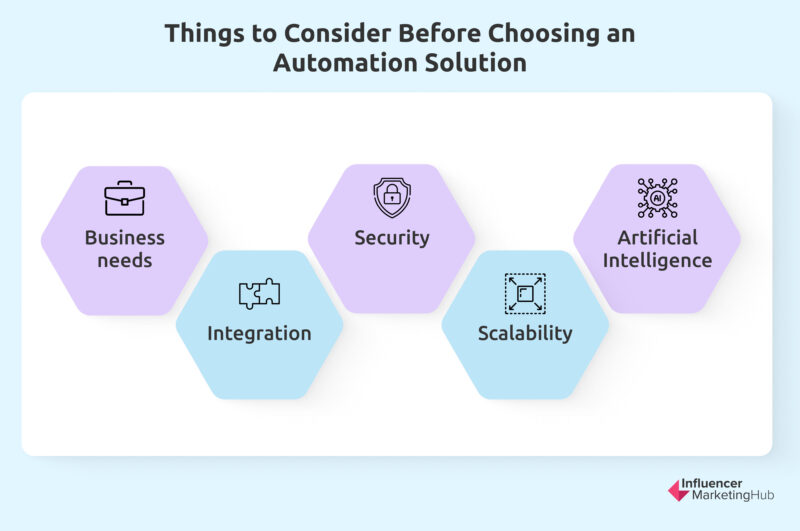Automation, at its root, pertains to technological applications wherein human involvement is minimized. It is increasingly crucial for businesses to adopt automation to stay competitive. The integration of automation technology is projected to increase business efficiency, cost-effectiveness, and productivity. Customer service, data processing, and supply chain management are all domains where automation technology is highly utilized. By adopting automated processes and technology, companies can streamline operations, remove various manual tasks associated with traditional systems, and reduce costs while enhancing performance.
For example, automating repetitive processes such as responding to client inquiries and providing customer support can improve customer service and reduce the overhead costs of employing, training, and retaining CSRs. Automation can also enhance supply chain management by providing timely and accurate data on inventory levels, order processing, shipping, and related processes.
Automation has become a regular part of daily business operations for many organizations. A substantial 31% of companies have adopted at least one fully automated service. Amazon is among the many businesses and marketplaces that have embraced this trend.
What Exactly Is Amazon Automation?
Amazon automation is a strategy that uses technology to make your Amazon store easier to manage and grow. It allows you to delegate repetitive tasks to automation, freeing your time for more valuable operations.
Some sellers are apprehensive about trying Amazon automation because of misconceptions about its meaning. The definition of “Amazon automation” varies depending on your goals. For Amazon sellers, automation can refer to the process of automating specific tasks and operations for your Amazon business or hiring a third-party agency to develop and expand your Amazon business for you.
Let’s have a closer look at these two automation approaches.
Third-Party Service Provider
Amazon automation is a business model in which all the operational parts of an Amazon business are given to a third-party service provider. This model, called “Done For You” service or full-service agency management, involves entrusting most of your business activities to someone else.
With this approach, an individual or agency is responsible for launching products on Amazon and boosting sales and profit margins. They handle the day-to-day tasks of running your eCommerce business, including product research, inventory management, listing optimization, advertising, monitoring, and task management.
The essential advantage of this type of automation is that a professional team can set up your business quickly and accurately, saving you from costly mistakes. There are many eCommerce agencies that offer automation services. The best agency for you depends on your business goals, the type of automation you need, and your budget.
Automating Tasks
Amazon task automation refers to a variety of operations that automate routine business workflows. Some examples include chatbots, sales forecasting, order entry, and fulfillment. This service takes a more hands-on approach to configuring automation for your Amazon store. Automating specific Amazon tasks is a targeted strategy that can benefit those with successful Amazon stores who want to streamline and scale their operations.
Like robots are used on factory assembly lines, Amazon automation restructures your Amazon business processes, making you more productive and profitable. It also improves the overall management of your business. If you assess your Amazon sales processes, you will find areas where automation can be implemented at each step. Since the sales process is cyclical, third-party seller tools can be used to automate the most time-consuming and tedious tasks.
Review your daily activities to identify which operations can be automated. Look for tasks that take up the most time, are repetitive, or have a high likelihood of human error.
Examples of Automated Tasks on Amazon
When implemented correctly, Amazon automation can save you resources and give you more time to grow your business. Effective Amazon automation helps you:

You have the option to use the various Amazon's automation tools and third-party services that connect with Amazon's API. This allows you to create a comprehensive and tailored eCommerce experience for your customers.
Fulfillment by Amazon (FBA) service is one of the most widely used automation tools for Amazon sellers. About 68% of Amazon sellers use FBA to streamline their operations. Amazon handles the entire fulfillment process for FBA users, from product selection to shipping, returns, and customer service.
Amazon SP-API (previously known as Marketplace Web Service) is another helpful tool that links your business to Amazon's systems. You can easily list products, handle orders and inventory, and process payments with just a few clicks.

Source: pacvue.com
Utilizing automation can be highly beneficial for Amazon marketing. Third-party services like Pacvue can help automate campaign optimization, budget management, and bespoke reporting for Amazon marketing. This can save you time and effort while also improving the value of your marketing campaigns.
Automation can also be beneficial for research purposes, particularly during the initial phases of researching new products or keywords. Going through market insights and data manually can be grueling and time-consuming, but using automation software can significantly speed up the process. By automating these tasks, you can free up time to focus on other essential aspects of your business.
6 Benefits of Amazon Automation
Amazon automation can make your life simpler. It enables you to keep track of, manage, and tweak your products' performance, which could potentially improve your profits. Moreover, it allows you to assign the most mundane tasks to someone else – a person or software. Amazon automation can also:

1. Increase efficiency and productivity
Streamlining your workflow, reducing the need for manual labor, and creating accurate and timely data can all contribute to increased productivity and output through Amazon automation. This can help to ensure that your resources are used optimally, allowing you to stay competitive and improve your overall performance.
2. Reduce error and manual labor
Automation can help reduce human errors and manual labor by automating repetitive and time-consuming tasks like inventory management. It also eliminates the need for manual data entry. This means more time can be dedicated to more strategic and value-adding activities.
Moreover, automation software and services are designed to be user-friendly, particularly for those new to the system.
3. Enhance sales and profitability
In eCommerce, time is money. When you automate various business components, you save countless hours. You can then use that time to expand your business and establish your brand. Automation can also provide valuable data and insights, allowing you to discover new opportunities and trends and make educated choices that drive growth and profitability.
4. Improve customer experience
Automation can reduce wait times, improve order fulfillment accuracy, and optimize delivery logistics. The use of advanced algorithms ensures accurate product selection, enhancing overall accuracy. Automation software also lets you promptly attend to your clients' needs, demonstrating your commitment to providing excellent service and valuing their business.
5. Help grow the business
Automation can help you scale your business by enabling you to handle more orders, broaden your target audience, and optimize customer interactions without increasing your workload. And as your brand grows, you can also scale your automation tools for upkeep.
6. Stay ahead of the competition
Automating tasks and utilizing related services can give you a competitive advantage by attracting more visitors and increasing transactions on the platform. You can also gain valuable business insights to optimize your operations and strengthen your market position.
How to Implement Amazon Automation
To successfully implement Amazon automation, you must use the right tools and software, identify which procedures and tasks should be automated first, and follow the best automation practices.
Tools and Software for Amazon Automation
There are a ton of automation tools that break down tasks for sellers. Any service under Amazon Web Services (AWS) s can be used for Amazon automation, with some of the most common services including:
AWS Lambda: This is a low-cost solution for running code at scale in response to triggers. It is ideal for automating tasks like parsing Amazon data or launching Amazon processes. It distributes your code seamlessly and handles administration, maintenance, and security fixes, with built-in logging and monitoring via Amazon CloudWatch.
EC2 Instances: Amazon Elastic Compute Cloud (EC2) offers scalable virtual computing capability for Amazon automation scripts and operations in the cloud.
Auto Scaling Groups: This service automatically adjusts the number of EC2 instances based on usage variations and can be integrated with AWS services like Amazon CloudWatch and AWS Elastic Load Balancing. They're commonly used for automation, ensuring that sufficient computing power is available to meet workload needs without manual intervention.
CloudWatch: This is a real-time and archival monitoring service for tracking AWS assets and applications, gathering and recording metrics, logs, and events. CloudWatch identifies abnormal activity, diagnoses issues, and responds automatically. It monitors Amazon's resource performance and sends alerts when certain thresholds are exceeded.
Amazon SQS: Amazon Simple Queue Service (SQS) automates Amazon data processing and inventory. With SQS, sellers can streamline workflows, improve efficiency and scalability, and automate order processing and inventory management tasks.
Ways Amazon Sellers Can Use Amazon Automation
Amazon sellers can check numerous areas in their Amazon shop where automation can be implemented, such as:
Distribute computing: You can use Amazon automation to distribute computing by using services like EC2 and Lambda for computing resources at scale. Incorporate Auto Scaling to allocate resources efficiently and balance workloads across instances.
Optimize applications: Amazon automation helps automate software update deployment and release. You can also improve application performance and delivery using services such as Amazon CloudFront. Doing this can reduce deployment and management time, improve the user experience, and minimize downtime.
Track data analytics: Amazon automation can help to capture, process, and analyze big data sets, as well as employ data visualization tools to gain insights from the data. This can enhance your decision-making process, simplify the management and analysis of large data sets, and reduce costs.
Monitor stock: To balance your inventory, you want enough stock to fulfill customer orders quickly but not too much excess inventory. You can use Amazon FBA to track sales and receive recommendations for replenishment quantities and shipping times. Additionally, the restock tool can forecast demand and seasonal trends to make inventory management easier.
Automate pricing: Automation repricing tools enable you to establish rules and algorithms that dynamically adjust the pricing of your offer based on the competition and market conditions. This keeps you relevant and helps you optimize your profits.
Manage customer engagement: With consumer engagement automatic tools, you can receive alerts when shoppers have questions and respond to common inquiries with customizable email templates. Also, you can receive recommended actions for negative reviews, helping you efficiently handle customer feedback.
Considerations When Choosing an Automation Solution
Choosing the right automation solution and deploying it effectively can be daunting. Here are key considerations to keep in mind before making a decision:

- Business needs: Identify which tasks require automation, prioritize processes that are prone to errors or bottlenecks, and evaluate where time is not being used effectively.
- Integration: Look for a solution that can integrate with your existing systems, such as email, marketing automation, sales database, inventory solution, and project management tools.
- Security: Ensure the automation software has the necessary security mechanisms to safeguard data storage, prevent loss or leakage, and maintain compliance certifications.
- Scalability: Choose an automation solution that can adapt and expand as your business grows.
- Artificial Intelligence: Consider an AI automation solution that can identify future demands, integrate customer data, and forecast trends in your niche.
Best Practices for Successful Implementation
Use these best practices to ensure that you choose the right automation tool and make the most of it:
- Assess your current processes and develop a clear automation strategy.
- Start with a phased approach, carefully prioritizing the core operations that must be automated.
- Use Amazon's existing services and automation tools.
- Audit your automation workflows for errors, inefficiencies, and areas for improvement.
- Employ data accuracy and security procedures, like setting up access restrictions, maintaining user permissions, and monitoring your automation for potential risks.
- Comply with Amazon policies: As long as you abide by the company's policies, Amazon supports automation software and tools that streamline various tasks and processes on the platform.
Final Thoughts
Investing in automation can offer several benefits, such as increased efficiency and time and cost savings, and can contribute to business growth. However, before deciding, it's crucial to assess your business needs and goals, as well as the potential costs and benefits of automation. Despite some negative perceptions, automation isn't a scam or illegal. It may not always work optimally if you choose the wrong automation tool or business operation or hire an incompetent service provider.
Since each Amazon business is unique, there is no one-size-fits-all approach to automation. To automate a specific task, you should research and select the tools that suit your store and operations best. What worked for other businesses may not be the best fit for your company. With advancements in technology, the capabilities of automation solutions for Amazon are only expected to improve, providing businesses with even more opportunities for growth and success.
Amazon automation is a strategy that uses technology to streamline and manage an Amazon store's operations. It involves automating repetitive tasks to free up time for more valuable activities. This can be done through task-specific automation tools or by hiring third-party service providers to handle business activities. Examples of automated tasks on Amazon include using Fulfillment by Amazon (FBA) for inventory management and shipping, automating customer service with chatbots, utilizing sales forecasting tools, optimizing marketing campaigns with third-party services like Pacvue, and automating pricing adjustments with repricing tools. The benefits of Amazon automation include increased efficiency and productivity, reduced errors and manual labor, enhanced sales and profitability, improved customer experience, business growth, and staying ahead of the competition. Amazon sellers can implement automation by using tools such as AWS Lambda for code execution, EC2 Instances for scalable virtual computing, Auto Scaling Groups for resource management, and Amazon SQS for data processing. Sellers should assess their current processes, prioritize tasks for automation, and ensure compliance with Amazon policies. Sellers should consider their specific business needs, the integration capabilities of the automation solution with existing systems, security measures to protect data, scalability to grow with the business, and the potential for using AI to forecast trends and customer demands.Frequently Asked Questions
What is Amazon automation?
What are some examples of automated tasks on Amazon?
What are the benefits of Amazon automation?
How can Amazon sellers implement automation in their stores?
What should sellers consider when choosing an automation solution?


